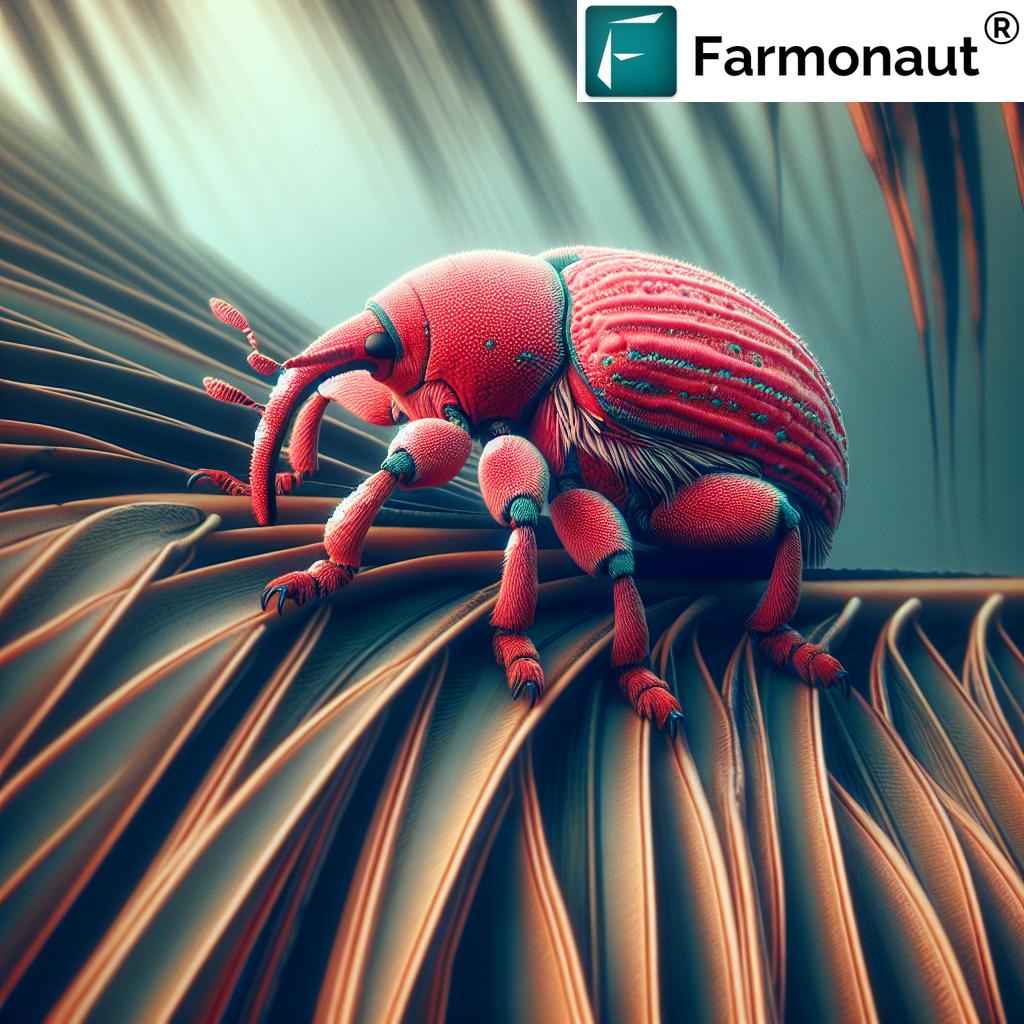Black Bugs on Lime Tree Leaves: Identifying and Controlling Citrus Pests

As citrus growers and enthusiasts, we understand the importance of maintaining healthy lime trees. One common issue that can plague our beloved citrus plants is the presence of black bugs on lime tree leaves. These tiny pests can cause significant damage if left unchecked, potentially leading to reduced fruit yield and overall tree health. In this comprehensive guide, we’ll explore the world of these pesky invaders, their impact on lime trees, and effective methods to identify and control them.
Understanding Black Bugs on Lime Trees
When we talk about black bugs on lime tree foliage, we’re often referring to a variety of insect pests that can infest citrus plants. These may include:
- Citrus blackfly
- Black citrus aphids
- Citrus leafminer larvae
- Scale insects
- Citrus whiteflies (which can appear dark in certain stages)
Each of these pests can cause unique problems for lime trees, but they all share the common trait of being small, dark-colored insects that feed on the leaves, stems, and sometimes fruit of citrus plants.
Identifying Black Bugs on Lime Tree Leaves
Proper identification is crucial for effective pest management. Here’s how we can recognize some of the most common black bugs on lime tree leaves:
1. Citrus Blackfly (Aleurocanthus woglumi)
- Appearance: Adult flies are small (about 1.5mm long) and black with a white waxy coating.
- Location: Usually found on the undersides of leaves.
- Damage: Causes leaf yellowing, sooty mold growth, and reduced fruit yield.
2. Black Citrus Aphids
- Appearance: Small, pear-shaped insects with long antennae.
- Location: Cluster on new growth, tender shoots, and leaf undersides.
- Damage: Cause leaf curling, stunted growth, and excrete honeydew that leads to sooty mold.
3. Citrus Leafminer Larvae
- Appearance: While the adult moths are not black, the larvae create silvery-black trails on leaves.
- Location: Inside the leaf tissue, creating winding tunnels.
- Damage: Distorted leaf growth and reduced photosynthesis.
4. Scale Insects
- Appearance: Small, oval, dark-colored bumps on leaves and stems.
- Location: Attached firmly to leaves, twigs, and branches.
- Damage: Suck sap from the tree, causing yellowing leaves and branch dieback.
5. Citrus Whiteflies
- Appearance: While adults are white, nymphs can appear dark and scale-like.
- Location: Undersides of leaves.
- Damage: Cause leaf yellowing, premature leaf drop, and sooty mold growth.
The Impact of Black Bugs on Lime Trees
The presence of black bugs on lime tree leaves can have several negative effects on the health and productivity of citrus plants:
- Reduced Photosynthesis: As these pests feed on leaves, they can damage the leaf surface, reducing the tree’s ability to photosynthesize effectively.
- Nutrient Depletion: Many of these insects suck sap from the tree, depriving it of essential nutrients and water.
- Sooty Mold Growth: The honeydew excreted by some pests provides a breeding ground for sooty mold, further inhibiting photosynthesis.
- Leaf Deformation: Feeding activity can lead to curled, distorted, or prematurely dropped leaves.
- Reduced Fruit Yield: Severe infestations can stress the tree, leading to fewer and smaller fruits.
- Disease Transmission: Some insects can act as vectors for plant diseases, compounding the damage.
Controlling Black Bugs on Lime Tree Leaves
At Farmonaut, we advocate for an integrated pest management (IPM) approach to controlling black bugs on lime tree foliage. This strategy combines various methods to manage pest populations effectively while minimizing environmental impact:
1. Cultural Controls
- Proper Irrigation: Avoid over-watering, as moist conditions can attract pests.
- Pruning: Regular pruning improves air circulation and reduces hiding spots for pests.
- Sanitation: Remove fallen leaves and fruit to eliminate pest habitats.
- Companion Planting: Grow pest-repelling plants like marigolds or nasturtiums near lime trees.
2. Biological Controls
- Beneficial Insects: Encourage natural predators like ladybugs, lacewings, and parasitic wasps.
- Neem Oil: A natural pesticide that disrupts insect feeding and reproduction.
- Insecticidal Soaps: Effective against soft-bodied insects like aphids and whiteflies.
3. Chemical Controls
When other methods prove insufficient, chemical pesticides may be necessary. However, we recommend using them judiciously:
- Horticultural Oils: Smother and suffocate pests while being relatively safe for beneficial insects.
- Systemic Insecticides: For severe infestations, consider products containing imidacloprid or thiamethoxam.
- Pyrethrins: Natural insecticides derived from chrysanthemum flowers, effective against a wide range of pests.
Note: Always follow label instructions and local regulations when applying any pesticides.
Preventive Measures
Preventing black bugs on lime tree leaves is often easier and more effective than treating an established infestation. Here are some preventive strategies we recommend:
- Regular Inspection: Examine your lime trees frequently, paying close attention to the undersides of leaves.
- Quarantine New Plants: Isolate new citrus plants for a few weeks before introducing them to your garden.
- Maintain Plant Health: Well-nourished trees are more resistant to pest infestations. Ensure proper fertilization and watering.
- Use Reflective Mulch: Silver-colored mulch can deter flying insects from landing on your trees.
- Install Sticky Traps: Yellow sticky traps can capture adult whiteflies and monitor pest populations.
Leveraging Technology for Pest Management
At Farmonaut, we believe in harnessing the power of technology to enhance agricultural practices. Our satellite-based crop monitoring system can be a valuable tool in managing pests like black bugs on lime tree leaves. Here’s how our technology can assist citrus growers:
- Early Detection: Our satellite imagery can detect changes in vegetation health, potentially indicating pest infestations before they become visible to the naked eye.
- Targeted Treatment: By identifying specific areas of concern, growers can apply treatments more precisely, reducing overall pesticide use.
- Monitoring Effectiveness: Track the success of pest control measures over time through regular satellite updates.
- Data-Driven Decisions: Use historical data to predict pest pressures and plan preventive measures accordingly.
To learn more about how Farmonaut’s technology can benefit your citrus growing operation, visit our application page or explore our API documentation.
Farmonaut Satellite System vs. Drone and IoT-based Farm Monitoring
| Feature | Farmonaut Satellite System | Drone-based Monitoring | IoT-based Monitoring |
|---|---|---|---|
| Coverage Area | Large scale (hundreds to thousands of acres) | Limited by flight time and regulations | Limited by sensor placement |
| Frequency of Data Collection | Regular intervals (e.g., every 3-5 days) | On-demand, weather dependent | Continuous, real-time |
| Initial Setup Cost | Low | High (equipment and training) | Moderate to High (sensors and network) |
| Operational Complexity | Low (cloud-based system) | High (requires skilled operators) | Moderate (maintenance of sensors) |
| Data Analysis | Advanced AI and machine learning | Requires specialized software | Varies based on system |
| Regulatory Compliance | Minimal concerns | Strict aviation regulations | Potential data privacy issues |
The Role of Precision Agriculture in Pest Management
Precision agriculture techniques, like those offered by Farmonaut, play a crucial role in modern pest management strategies, especially when dealing with issues like black bugs on lime tree leaves. Here’s how precision agriculture contributes to more effective pest control:
- Targeted Application: By identifying specific areas of infestation, growers can apply treatments only where needed, reducing overall pesticide use.
- Resource Optimization: Precision techniques help optimize the use of water, fertilizers, and pesticides, leading to more sustainable farming practices.
- Data-Driven Decision Making: Detailed crop health data allows for informed decisions about when and how to intervene in pest management.
- Predictive Analytics: By analyzing historical data, growers can predict potential pest outbreaks and take preventive measures.
- Environmental Impact Reduction: More precise pest management reduces the overall environmental footprint of citrus production.
To learn more about how Farmonaut’s precision agriculture solutions can benefit your citrus growing operation, visit our Google Play Store or Apple App Store pages to download our mobile app.
The Future of Black Bug Control in Lime Trees
As we look to the future, several emerging technologies and techniques show promise in managing black bugs on lime tree foliage more effectively:
- Gene Editing: CRISPR technology may be used to develop citrus varieties with enhanced pest resistance.
- Pheromone Disruption: Advanced pheromone-based techniques could disrupt pest mating cycles without harming beneficial insects.
- Nanotechnology: Nano-scale pesticides may provide more targeted and effective pest control with reduced environmental impact.
- AI-Powered Pest Recognition: Machine learning algorithms could enable real-time pest identification and treatment recommendations through smartphone apps.
- Robotics: Autonomous robots may be developed for precision pesticide application and mechanical pest removal.
At Farmonaut, we’re committed to staying at the forefront of these technological advancements to provide citrus growers with the most effective tools for pest management.
Frequently Asked Questions (FAQ)
Q1: How often should I inspect my lime trees for black bugs?
A1: We recommend inspecting your lime trees at least once a week during the growing season. More frequent inspections may be necessary during peak pest seasons or if you’ve had previous infestations.
Q2: Can black bugs on lime tree leaves spread to other citrus plants?
A2: Yes, many of these pests can easily spread to other citrus plants and even some non-citrus species. It’s important to monitor all nearby plants and treat infestations promptly to prevent spread.
Q3: Are there any natural predators that can help control black bugs on lime trees?
A3: Yes, several beneficial insects can help control black bug populations. Ladybugs, lacewings, and parasitic wasps are particularly effective. Encouraging these natural predators in your garden can be an important part of your pest management strategy.
Q4: How can Farmonaut’s technology help me manage black bugs on my lime trees?
A4: Farmonaut’s satellite-based crop monitoring system can detect early signs of stress in your lime trees, which may indicate pest infestations. This allows for early intervention and more targeted pest management. Our system also provides valuable data on overall crop health, helping you make informed decisions about tree care and pest control.
Q5: Are chemical pesticides safe to use on lime trees?
A5: When used correctly, many chemical pesticides are safe for use on lime trees. However, it’s crucial to follow label instructions carefully, observe pre-harvest intervals, and consider the impact on beneficial insects. We generally recommend trying cultural and biological controls first, reserving chemical treatments for severe infestations.
Q6: How long does it typically take to control a black bug infestation on lime trees?
A6: The time to control an infestation can vary depending on the severity and the methods used. With consistent application of appropriate treatments, you may see significant improvement within 2-4 weeks. However, complete control may take several months, especially for severe infestations.
Q7: Can pruning help control black bugs on lime trees?
A7: Yes, pruning can be an effective part of pest management. It improves air circulation, reduces hiding spots for pests, and makes it easier to apply treatments effectively. However, be sure to properly dispose of pruned material to prevent reinfestation.
Q8: How can I prevent black bugs from infesting my lime trees in the first place?
A8: Prevention strategies include maintaining overall tree health through proper nutrition and watering, encouraging natural predators, using reflective mulch, and regularly inspecting your trees. Farmonaut’s satellite monitoring can also help by detecting early signs of stress that might make trees more susceptible to pests.
Conclusion
Managing black bugs on lime tree leaves requires a comprehensive approach that combines careful observation, preventive measures, and targeted interventions. By understanding the types of pests that can affect lime trees, their impact, and the various control methods available, citrus growers can effectively protect their trees and ensure healthy, productive orchards.
At Farmonaut, we’re committed to supporting citrus growers with cutting-edge technology and data-driven insights. Our satellite-based monitoring system provides valuable tools for early detection and targeted management of pest issues, complementing traditional pest control methods.
Remember, successful pest management is an ongoing process that requires patience, persistence, and adaptability. By staying informed about the latest developments in pest control and leveraging advanced technologies like those offered by Farmonaut, you can keep your lime trees healthy and thriving for years to come.
For more information on how Farmonaut can help you manage your citrus orchard more effectively, visit our developer documentation or contact our support team.
Subscribe to Farmonaut














